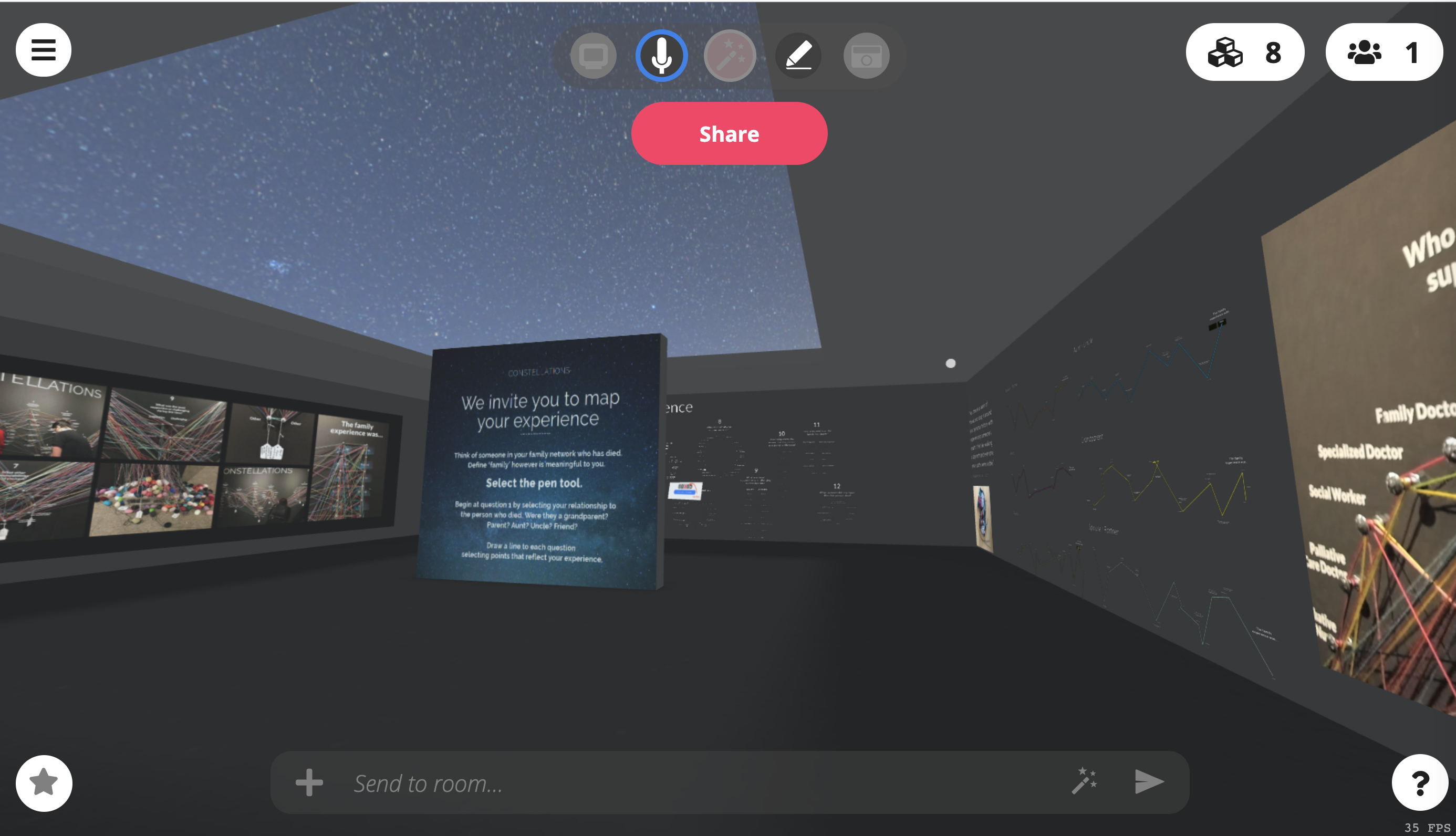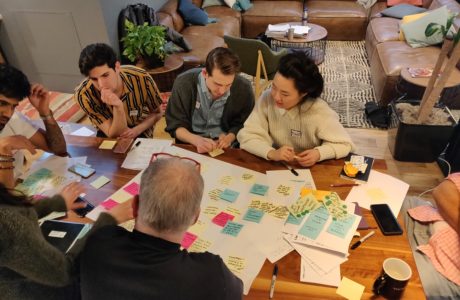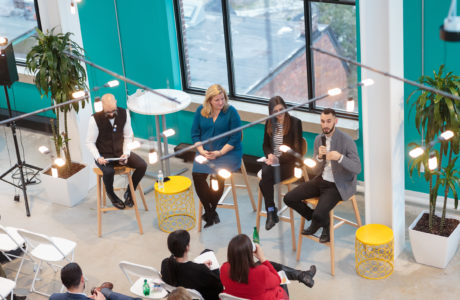By bringing people and their lived experiences into the process, we can seek to empathize, understand, and create solutions that address the design problem at hand.
What is vulnerability and why do we create space for it?
As a society, we have collectively never felt more vulnerable. The extent and impact of that exposure varies for each individual, but the state of vulnerability remains constant.
Vulnerability is a core human experience. Talking about vulnerable topics is a complex process in which to engage; it’s vital to understanding the human condition and how we can support people through trying circumstances. Whether you’re thinking about long-term care, end of life, hospice, people experiencing homelessness, food security, the unbanked—vulnerable people and circumstances need to be approached with added care and sensitivity.
As designers and Innovation practitioners, we are experts in hosting and engaging people through vulnerable topics. To unpack these experiences in an effective and respectful way, we have to meet people where they are at and support the unique needs that they may have as a result of their vulnerability. In doing so, we can ease that discomfort and support people in expressing and processing their experiences, while helping to articulate the needs that surface.
Once these needs are surfaced and understood, we can design for them. If people can be better supported to navigate vulnerable experiences from the beginning, we can reduce the need to persevere through challenging times or the repercussions that may occur as a result.
Take palliative care as an example. Karen Oikonen recently wrote about the death and dying experience, noting that if we only design for the medical needs of patients, we are missing the larger human experience; we must also look at the very human needs of patients, caregivers, and families during an extremely vulnerable time.
As designers, we always try to seek the needs of all people involved. Vulnerable experiences, such as death and dying, often have heightened needs and increased barriers to addressing those needs effectively. Participatory Design is a thoughtful approach well suited to engaging with vulnerability.
Participatory Design as an approach to vulnerability.
We can look to Elizabeth Sanders for an explanation of Participatory Design “…it emphasizes the direct and active participation of all stakeholders in the design development process. This makes the deliverables of design more meaningful to the people who will ultimately benefit from them.” Sanders explains that Participatory Design emerged as part of the evolution of design that goes beyond the traditional notion of communication design and visuals and into the realm of research, social studies, and creation of new tools.
By bringing people and their lived experiences into the process, we can seek to empathize, understand, and create solutions that address the design problem at hand.
Constellations: A Participatory Design installation on death and dying.
Last year Karen Oikonen and Kate Hale Wilkes hosted an exhibit, Constellations, at DesignTO 2019. The exhibition invited the public to contribute their experiences around the death of a loved one and map it with yarn on the installation. It was a simple, yet creative and powerful way for visitors to express their experience on a historically difficult subject, engaging in a larger conversation.
Participatory Design has a distinctive quality about engaging people to express their experiences through art and tactile materials, where words may otherwise fail them.
Sometimes words fail us, and it can be difficult to express our thoughts—especially around a particularly emotional or traumatic experience. There is a distinctive quality about engaging participants to express their experiences through art and tactile materials, and without the pressure or need to find the words to express themselves.
The idea from Constellations was met with great success and has led Karen and Kate to further explore death, dying, and Participatory Design—through virtual reality.
The 2020 global Participatory Design Conference.
Karen Oikonen and Kate Hale Wilkes are being featured at the global Participatory Design Conference (PDC) sharing their participatory installation, Constellations. The PDC brings together talent from across the world to delve into a range of topics including power dynamics, climate emergency, embodied identities, and material politics, all through various participatory forms.
This bi-annual will showcase boundary-pushing examples of Participatory Design from around the world with the help of Virtual Reality (VR) technology and online conferencing software.
Constellations is a way for people who have had vulnerable experiences with end of life to participate in knowledge sharing and understanding through a Virtual Reality exhibit. We’re providing an opportunity for participants to share their stories and do so thoughtfully with the use of VR technology and expertly facilitated sessions.
Innovating new ideas and tools is a privilege and also exciting. It’s helping us to learn and build different ways of engagement and gather insights from this work on a global stage. The installation is part of a selection of Situated Actions, or public installments, being showcased from around the world, by artists, designers, and academics.
The Constellations exhibit for the PDC is now available for the public to view online! For access to the exhibit, click here.

Inside Constellations’ VR installation at the global Participatory Design Conference 2020 “We invite you to map your family experience.”
Resources to learn more about Participatory Design and get involved.
Part of the joy of engaging in future-facing tools like VR (which can be accessed through VR headset or via desktop) helps us understand what is possible and how it helps us to better interact with prototypes, engagement, and information sharing on a digital platform. This installation is helping us to explore the next generation of Participatory Design.
If you’re looking for tools to start, or augment, your Participatory Design practice, we’re sharing a few examples of digital tools we’ve been integrating into our practice:
The fundamentals of online collaboration:
- Zoom or Microsoft Teams for video conferencing, with breakout rooms to enable both small group and plenary discussion
- Mural or Miro for online collaboration, complete with templates and sticky notes that mimic the face-to-face experience
- Figma for wireframing, also great for collaborating on visuals or content that export to PDF
Examples for remote engagement:
- Echoes: An interactive 3D experience where users can navigate the Canadian mosaic. An inspiration behind the concept of Constellations, and an example of a digital tool that pushes the possibility of remote engagement and the value of broadening engagement widely (i.e. cross-country, thousands of contributions, and an ability to view the macro (web) and micro (individual responses) (2016)
- The world in 10 blocks: this online experience brings viewers into the world of Toronto’s Bloorcourt neighbourhood through stories of its immigrants and small business owners. It provides a “choose your own adventure” mode of exploration, with media that enables a range of engagement (audio, personal stories, photos, street view navigation, etc.) Consider this an “enriched” digital experience that can be circulated and enjoyed far beyond Bloorcourt. (2016)
- Space Engagers: an Irish research and co-design collective that has used custom-designed apps to engage residents in civic decisions. They have gone on to inform policy (images of community sites with residents’ commentary—something that could easily continue in the days of physical distancing.)
The next chapter in Participatory Design.
Engaging in vulnerable topics is not easy. It takes compassion, empathy, and understanding. Participatory Design is a great mechanism to open up those conversations and design solutions with a truly human-centred lens, and we are continuing to explore and refine our practice in this area.
What complex topics are you working through right now? Want to better understand how Participatory Design can be incorporated into your practice? Whether you’re engaged in projects in the private, public, or not-for-profit sectors, we’re experts in the space and are genuinely interested in hearing what you’re working on. Let’s talk Participatory Design.








